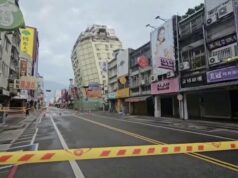By
Colonel Awadhesh Kumar, Special Forces
Till 1959, Indian Army was totally Pak oriented in its deployment and preparedness. This was as per laid down political directives of an elected Government. The Cabinet in general and its chairman in particular,the PM, neither bothered to ask for nor acted on the advice given by the Military on matters defence. The PM, if at all he took any advice on Foreign affairs or matters Military, he took it from non professionals. He acted as his own Foreign Policy maker and defence expert.
By the time Dalai Lama reached India, it was bit too late. The process of redeployment along with infrastructure and logistic build up started but at a very slow and half hearted pace. Then many a times there were intervention even of tactical nature due to police Oriented advice rendered by then IB Chief to the PM. This was also the period when there was a wide spread bitterness between the Defence Minister and the COAS. Krishna Mennon in fact was on a witch hunt to finish Officers like General Thorat, Manekshaw and others.
Observing the built up, the Chinese rightly chose the best time frame. The month of October was ideal based on terrain and climatic conditions. Added advantage came in the form of CUBAN CRISIS which ensured that neither of the Super Powers nor the Europeans could devote any time to this Himalayan Blunder of Nehru.
The Chinese struck both in Ladakh and NEFA Sectors simultaneously. In the Central Sector it was confined to a few Skirmishes only because Chinese perceived certain disadvantages. The Chinese had a very large edge in both Military numbers and logistics build up. However the biggest set back for India was the paralysis at the highest level of political decision making. This loss of POLITICAL WILL POWER led to non issue of any Strategic directives, non involvement of IAF and PM even making an speech on All India Radio abondining the North East to its own fate. This paralysis percolated to the Army GHQ and combined with Military incompetency and inefficiency of a few Senior Military Commanders led to wrong decision making.
In Ladhak Sectors, after early losses, Indian Army reacted quickly, withdrawing isolated posts. There after fierce battle was given at Rezangla and Gurung hill. Though victorious, seeing their own casualty level, wisely the Chinese refrained from further advance. They knew that their logistic tail would get twisted once full winter set in. Also Indian build up through Leh Airfield had started piciking up. A few light tanks had already reached Chusul Area and IAF would be ready to intervene. So they stopped in their tracks stating that they have reached their claim lines !!
Whereas in NEFA, Indians withdrawal from Tawang was wrong but a Chusul like battle at Sela would have still saved the day ( Rifleman Jaswant Singh at Nuranung all alone gave a glimpse of it single handedly ). The order to abandon Sela was disastrous ( who gave it,still remains unclear). The Chinese reached Bhalukpong on Assam border and quickly withdrew unilaterally back to their original claim line a full 200km behind. Again they knew that with no logistic tail within India and a very twisted one in Tibet during the Tibetan winters, the Indian Forces moving in from the plains would make a mince meat of them. By their withdrawal ( they are still laying claim to Tawang if not entire Arunachal) they tried to be the GOOD GUYS after heaping military,political and psychological humiliation over the Indians. So even when out of say 60 available Brigades, just one fought valiantly in Chusul Sector and around three to four fought in NEFA Sector, Indian as a whole lost the War psychologically.
In contrast to the above,in 1971 an expanded Indian Military was far better prepared in all spheres. It had now more than enough forces in the form of 10 mountain divisions to blunt any Chinese onslaught at the LC itself. An expanded IAF with MIG21 Squadrons and a well armed Navy. Further the military leadership at the Chiefs level was brilliant..Manekshaw, PC Lal and Nanda. Who would think of going on the offensive with missile boats ( meant for coastal defence ). The three service joint action probably bested those of the US JointCommand of the time. The preparation for War and choosing its time and place was that of the Chiefs with full support of the Govt sans interference at Operational or tactical levels.
At the Political level the WILL displayed was of the highest order, undeterred by even the failed bullying tactics of Nixon who in frustration could only use foul language ( in front of Kissinger only) against Indira Gandhi. International support had been garnered by displaying the plight of the Refugees from East Pakistan and the display of proof of Pakistani genocide. Any Coercion through UNSC was blunted by the Soviet Veto and the Enterprise TF ex 7th fleet was blunted by the Russian TF (even the IN had its own plan though). The execution of War at Operational level in the East was flawless and with all hopes of escape sealed, the Strategic para drop at Tangail hastened the Dacca Surrender of nearly 95000 Pakistani troops. It also led to creation of a new Nation Bangladesh.



